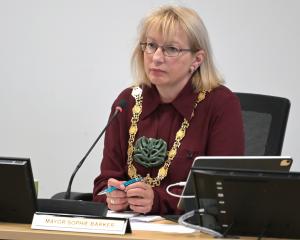The issue of overseas drivers has flared again, and for very good reason. Five appeared in Otago courts on Monday after a weekend of death and injury.
The five included a Chinese tourist who appeared in the Dunedin District Court charged with dangerous driving causing the death of a 5-year-old girl on Saturday.
In Queenstown, two Chinese men and an Indian man were convicted of driving dangerously, fined and banned from driving on New Zealand roads.
Another Chinese tourist admitted careless driving causing injury to three other tourists.
Yesterday a German driver was charged after a fatality near Springston, Canterbury and police confirmed the driver of a rental car killed near Greta Valley, North Canterbury last week was a Chinese tourist.
The statistics are mounting, in part because more tourists are renting cars.
The latest figures (2013) show overseas drivers involved in 11 fatal crashes (the overseas driver had primary fault in all of them) and 90 serious-injury crashes (78 with primary overseas driver fault).
Some people point to the death and injury toll, comment legitimately on the poor driving standards of many New Zealanders and say 11 does not seem particularly high in relation to the full road toll - 253 fatalities in 2013.
But that is 4.3% of fatalities, when foreign drivers are a far smaller proportion of the driving population than that.
The Westland and Queenstown Lakes figures are instructive.
The proportion of overseas drivers in those districts is higher than elsewhere and this is reflected in the figures for crashes involving an overseas driver, 37% and 24% respectively.
But, surely, they do not make up anything like that proportion of motorists given the number of local drivers and New Zealand tourists and visitors.
Foreign-licensed drivers from countries which, like New Zealand, are signatories to the United Nations' Geneva Convention on Road Traffic have the right to drive here.
New Zealand can hardly turn around and demand obligations which its citizens do not face overseas.
But one issue is that driving conditions vary enormously.
Just as a driver from Otago or Southland might be overwhelmed by traffic in Berlin, Bangkok or Beijing, a driver from Hong Kong would find the characteristics and hazards of our open roads strange.
Empty, twisting two-way carriageways would be novel and present different challenges.
Licensing standards also vary. In many places, they will not be as stringent as they are becoming in New Zealand.
There are, as well, a range of international attitudes to driving safely.
New Zealand still has a long way to go to match some countries but in this area is well ahead of most of the developing world or southern Europe.
While keeping left is a matter of concern when much of the world drives on the right, failing to keep left is far from the only cause of catastrophic crashes.
Some of the overseas drivers in crashes, too, come from left-hand drive countries - Australia, Britain, India, Japan, for instance.
What will be required to minimise the hazards are measures across several fronts.
There is keeping left, and rental car companies have introduced steering wheel stickers to act as prompts.
The companies need to go further and not prevaricate on blacklists for drivers denied contracts.
They also need to conduct at least rudimentary driving checks if they have doubts about a driver's basic ability.
Overseas visitors also need to be told, even if via in-flight videos or rental company presentations, just how dangerous our roads are.
This must be achieved with hard information about specific crashes and their physical and human impact and specific examples of what goes wrong.
As New Zealand Transport Authority southern regional director Jim Harland said, quite a lot is happening.
But that can only be a start and change needs to be accelerated.
Roading improvements would certainly help, and it is encouraging the Government agrees median barriers prevent crashes.
Obviously, it will take time before more are introduced, and rope median barriers, fences, rumble strips, more left arrows on roads, more safe stopping places to take photographs and other measures need to be expedited.












